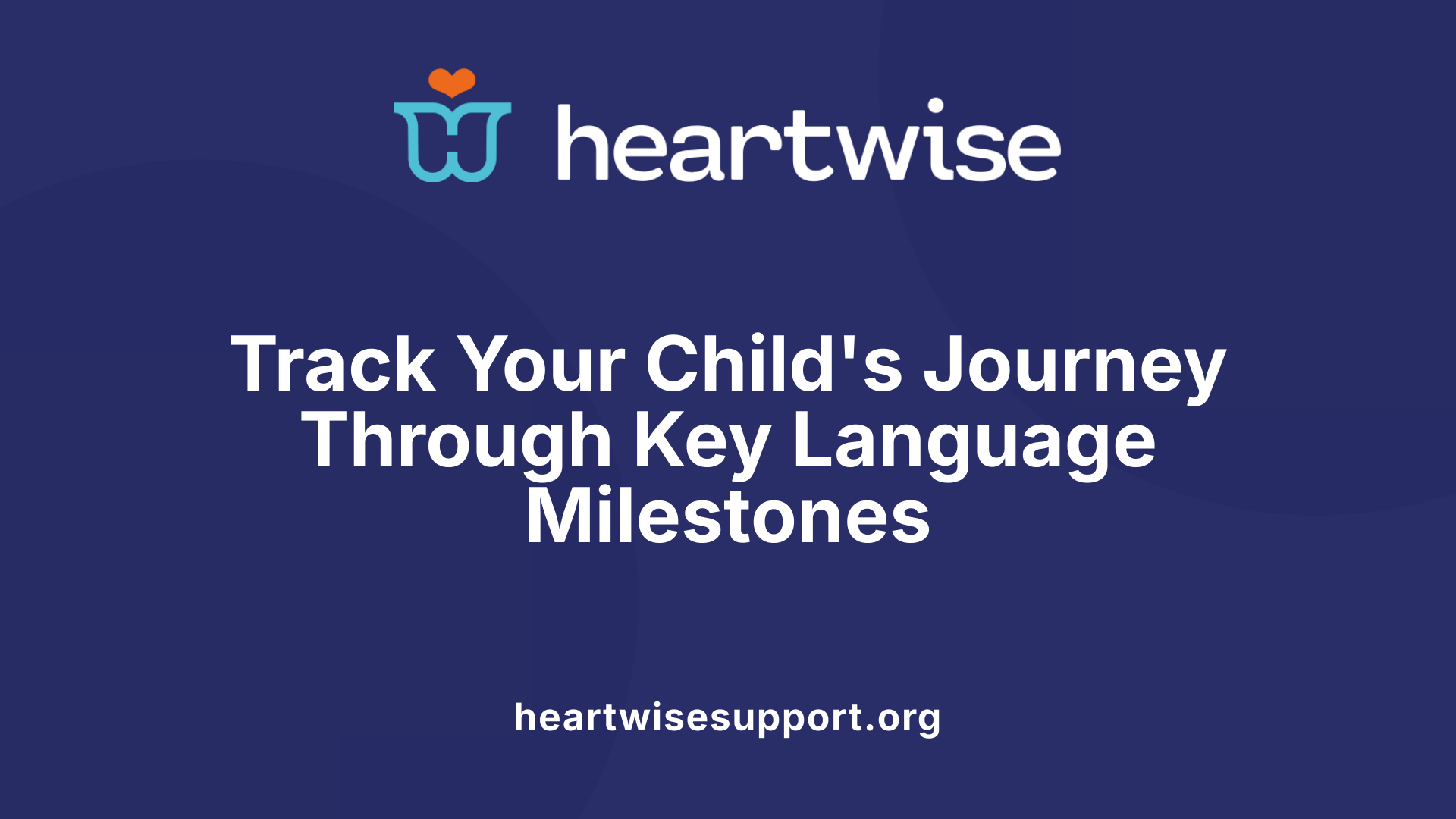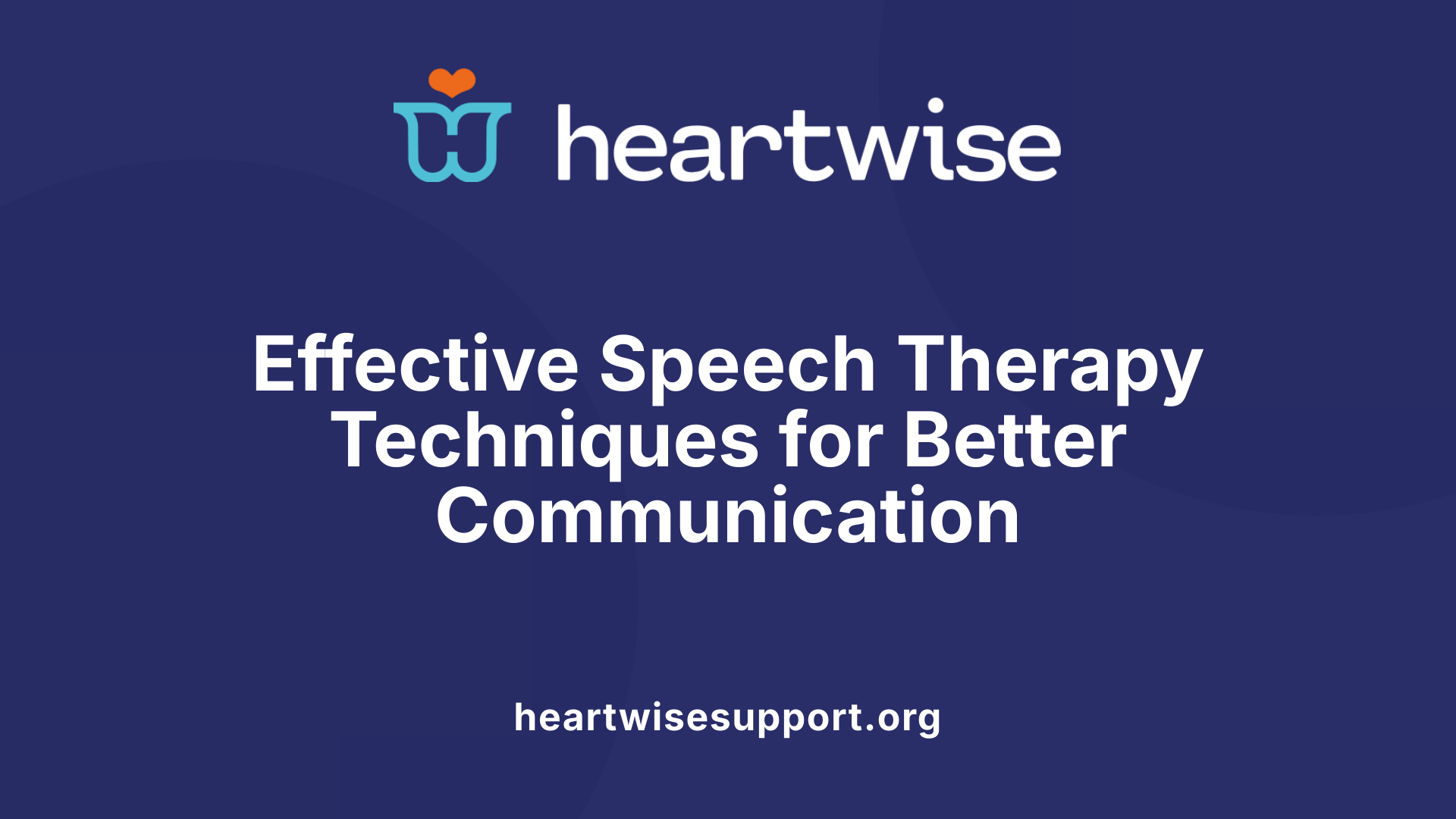Understanding Expressive Language and Its Role in Communication
Expressive language is a fundamental aspect of effective communication, encompassing the ability to use words, gestures, and sentences to convey thoughts, needs, and feelings. Recognizing the developmental milestones and understanding the relationship between receptive and expressive language are vital for supporting children's growth. Speech therapy offers targeted interventions to foster these skills, leading to improved social, academic, and emotional outcomes.
Developmental Milestones in Expressive Language

What are developmental milestones for expressive language?
Expressive language development marks an essential part of children’s overall communication skills. It starts early in infancy and continues to grow rapidly during the preschool years.
In the beginning, infants exhibit coordinated cooing and babbling, which are the first steps toward meaningful speech. These early sounds lay the groundwork for later language acquisition.
By around 12 months, most children say their first words. These are usually simple labels for familiar people, objects, or routines. During this stage, children also begin to use gestures, such as pointing or waving, to communicate intentions effectively.
Between 18 months and 2 years, expressive language develops quickly. Children typically have a vocabulary of about 50 words. They start combining words into simple two-word phrases, imitating sounds and words they hear during daily conversations.
As children approach age 3, their vocabulary expands further, ranging from 50 to 200 words. They begin forming three- or four-word sentences, asking questions like "What is that?" and using pronouns such as "I," "you," and "me." Their expressive skills include describing objects or experiences and asking for things.
From age 3 to 5, children develop longer, more complex sentences. They ask varied questions—who, what, where, when, why—and use more developed vocabulary for describing people, actions, and settings. They also start engaging in storytelling and retelling familiar stories, demonstrating a significant milestone in expressive language.
These milestones not only reflect cognitive and social growth but also are fundamental for successful interactions at school and in social environments. Early assessment and targeted interventions can support children who show delays in reaching these milestones.
How can speech therapy support expressive language development?
Speech therapy, delivered by qualified speech-language pathologists, plays a vital role in helping children overcome expressive language delays. Using personalized exercises, therapists target specific areas such as vocabulary building, sentence structure, and grammatical accuracy.
Effective strategies include play-based therapy, storytelling, role-playing, and engaging activities tailored to each child's interests. Visual supports, social stories, and real-life practices help reinforce learned skills.
Assessment tools like standardized tests and observations help identify individual needs, allowing therapists to customize therapeutic approaches. Additionally, creating a language-rich environment at home, through labeling objects, singing songs, and engaging in language games, supports ongoing development.
Supporting children's expressive language capabilities enhances their social interactions, builds confidence, and prepares them for academic success. Early intervention is crucial, especially for children with conditions like autism or neurological challenges.
Below is a quick overview of expressive language milestones across different age ranges:
| Age Range | Typical Milestones | Examples of Skills | Additional Notes |
|---|---|---|---|
| Birth to 12 months | Cooing, babbling, first words | Recognizing familiar voices, simple words like "mama" or "dada" | Early sounds are foundational for later speech |
| 12 to 24 months | 50 words, simple phrases | Naming familiar objects, imitating words, combining words | Beginning of sentence formation and expressive vocabulary |
| 2 to 3 years | 50-200 words, short sentences | Asking questions, using pronouns, describing objects | Vocabulary grows rapidly, stronger sentence skills |
| 3 to 5 years | Longer sentences, complex vocabulary | Storytelling, asking varied questions, descriptive language | Language serves social, academic, and emotional needs |
Understanding these milestones helps parents and educators support language growth effectively, ensuring children develop strong foundational communication skills for life.
Receptive versus Expressive Language—An Interdependent Framework
What is receptive language and how does it relate to expressive language?
Receptive language refers to the ability to understand and comprehend spoken or written language. It encompasses skills such as following directions, understanding vocabulary, reading comprehension, and making inferences based on context or gestures. Essentially, it is the informational input that allows an individual to grasp what is being communicated.
In contrast, expressive language is the capacity to use words, gestures, or other communication methods to express thoughts, needs, and feelings. It includes asking questions, naming objects, commenting, and developing vocabulary, syntax, and semantics. This represents the 'output' side of communication—how a person actively shares information.
Both skills are essential and closely linked. Typically, children develop receptive language skills before expressive abilities. This means they often understand more than they can say, which can sometimes lead to frustration if expressive skills lag behind. Recognizing the importance of both areas is crucial, especially when addressing language delays.
How do receptive and expressive language differ in development?
Receptive language tends to develop earlier than expressive language. This natural progression allows young children to understand their environment and learn from it before actively participating through speech. For example, a toddler might understand simple instructions like "sit down" or recognize familiar objects, even if they cannot yet say the words.
Expressive language development involves growing vocabulary, sentence structure, and conversational skills. It often requires explicit teaching and practice, especially in children who show delays or difficulties. Successful development of expressive language relies heavily on receptive skills; if a child does not understand the input, their output will also be affected.
Why are these skills vital for effective communication?
Effective communication depends on both understanding and expression. Receptive skills enable individuals to interpret messages, follow instructions, and process complex conversations. Meanwhile, expressive skills allow them to convey their ideas, ask questions, and interact socially.
For example, in a classroom, a child's ability to understand a teacher’s instructions (receptive language) combined with their ability to respond appropriately (expressive language) determines their participation and learning outcomes.
What happens when there are difficulties in receptive or expressive language?
Difficulties in either area can significantly affect overall communication. Challenges in receptive language might include not understanding directions, missing nuances in stories, or struggling with reading comprehension. This can lead to academic difficulties and social misunderstandings.
Conversely, expressive language delays can result in frustrations, limited vocabulary, challenges with grammar, and difficulties expressing needs or ideas effectively. This might impact social interactions, self-esteem, and the ability to participate fully in group activities.
Interventions, such as speech therapy, are often employed to support development in both domains. Therapists use assessments, personalized activities, and strategies like visual aids, storytelling, and engaging routines to improve language skills.
| Aspect | Receptive Language | Expressive Language | How They Interact |
|---|---|---|---|
| Development Age | Develops earlier, usually before expressive skills | Develops later, builds on receptive skills | Both are interdependent; progress in one supports the other |
| Primary Function | Understanding and interpreting messages | Conveying thoughts and feelings | Strong receptive skills facilitate expressive language growth |
| Common Difficulties | Not understanding instructions, stories, or gestures | Limited vocabulary, grammatical errors, hesitation in speech | Difficulties in either can hinder overall communication |
| Therapy Focus | Listening skills, comprehension exercises | Vocabulary, sentence structure, conversational skills | Combined approaches enhance overall language competence |
Resources for parents and educators
Understanding the relationship between receptive and expressive language can help in early diagnosis and intervention. Resources such as guided activities, visual supports, and speech therapy programs aim to foster balanced growth in both areas.
Early intervention benefits children greatly, especially when it addresses both understanding and expression. Techniques include reading together, engaging in conversations, and using multimedia tools as part of a comprehensive approach.
Improving these skills allows for better social interactions, academic success, and confidence, setting a strong foundation for future communication and learning.
Recognizing Signs of Expressive Language Difficulties and Delays

What are some signs of expressive language difficulties or delays?
Recognizing early signs of expressive language challenges can make a significant difference in addressing them effectively. Common indicators include a limited vocabulary that doesn’t expand as expected for the child's age, and the use of short or simple sentences that lack complexity.
Children exhibiting expressive language delays often struggle with forming correct grammar — for example, omitting endings or misusing verb tenses. They may also have trouble constructing complete sentences, which can make communication appear fragmented.
Hesitation or uncertainty when speaking is another visible sign. Children might pause frequently, repeat words or phrases, or sound unsure of themselves in conversations. Describing ideas or explaining something may be difficult, resulting in vague or unclear responses.
Vague words like "thing," "stuff," or "it" are common substitutes when children lack specific vocabulary, hindering effective communication. Repetition of phrases or words, known as echolalia, might also be observed.
In preschool-aged children, delays in reaching typical speech milestones—such as first words or combining words into sentences—are notable signs. Many rely more heavily on gestures or nonverbal cues than spoken words.
Older children who experience expressive language difficulties may avoid social interactions or shy away from storytelling and sharing experiences. They might find it hard to participate in conversations or narrate events clearly.
Overall, these signs can be linked to conditions such as expressive language disorder or broader developmental delays. Early intervention with speech therapy often helps children improve their expressive language skills, boosting their confidence and ability to communicate effectively.
How can these signs guide early intervention?
Being attentive to these signs allows parents and educators to seek timely assessment and support. Speech-language pathologists can conduct comprehensive evaluations, including standardized tests and observations, to confirm diagnoses.
Interventions typically involve tailored activities to expand vocabulary, improve sentence structure, and develop grammatical skills. Therapy might incorporate play-based activities, storytelling, role-playing, and visual supports.
Supporting children in everyday settings—labeling objects, engaging in language games, and encouraging narration—can foster ongoing growth.
Early recognition and intervention are critical for helping children develop the communication skills essential for social, academic, and emotional success.
How Speech Therapy Enhances Expressive Language Skills

How can speech therapy improve expressive language skills?
Speech therapy plays a critical role in helping individuals develop and refine their expressive language abilities. Through specialized assessments, speech-language pathologists identify unique challenges and tailor treatment plans that address specific needs.
One of the primary focuses of therapy is on targeted exercises that enhance vocabulary, sentence structure, and grammatical accuracy. These exercises are designed to be engaging and motivational, often involving activities like storytelling, role-playing, and using visual supports.
Techniques such as modeling language, recasts, and expansions are commonly employed to improve sentence complexity and clarity. For example, therapists may model correct grammar or extend a child's simple sentence to include more details, helping the individual learn how to form more sophisticated expressions.
Engagement is fostered through fun and meaningful activities. Play, storytelling, and pretend scenarios provide practical contexts that encourage spontaneous speech and social communication. These methods help reinforce skills like asking questions and making comments, which are vital components of expressive language.
Building confidence is integral to successful therapy. Positive reinforcement and gradual exposure to more challenging speech tasks help individuals gain self-assurance in their communication abilities. This approach often involves creating a safe environment where mistakes are viewed as learning opportunities.
Overall, speech therapy offers a comprehensive approach that combines assessment, individualized exercises, and practical application to improve expressive language. The goal is to empower individuals to communicate their thoughts, feelings, and needs more effectively in everyday situations, boosting social interaction, academic success, and self-esteem.
What specific techniques are used in speech therapy?
| Technique | Description | Benefits |
|---|---|---|
| Modeling | Repeating correct language forms to demonstrate proper use | Helps learn correct sentence structure |
| Recasts | Restating a child's incorrect or incomplete sentences correctly | Reinforces proper grammar and vocabulary |
| Expansions | Adding words or details to a child's speech | Builds complexity and richness in language |
| Play and storytelling | Using stories, role-play, and pretend scenarios | Engages creativity and encourages spontaneous speech |
| Visual supports | Using pictures, objects, and communication boards | Supports understanding and expression |
How do activities support expressive language development?
Activities such as conversation practice, storytelling, and guessing games promote functional language use. They provide opportunities for individuals to practice asking questions, making comments, and using new vocabulary in a context that feels natural.
Incorporating routines like following recipes or daily schedules gives practical experience in sequencing and language use. Arts and crafts, singing, and media like music videos make learning enjoyable and memorable.
When activities are customized to specific speech goals—such as improving descriptors, verb usage, or social pragmatics—they become more effective. Engaging and fun activities motivate individuals to participate actively, which accelerates learning.
How is personalized evaluation and treatment planned?
Assessment involves standardized tests, direct observation, and interviews to pinpoint strengths and challenges. Based on this data, speech-language pathologists design specific exercises focusing on vocabulary, sentence formation, and grammatical skills.
Treatment plans are flexible and gradually
Activities and Resources Supporting Expressive Language Development

What activities and resources can support expressive language development?
Supporting expressive language involves engaging children in a variety of activities that promote speaking, vocabulary building, and effective communication. Play-based activities with favorite toys, arts and crafts, storytelling, and interactive games are particularly effective.
Engaging children in play with preferred toys such as play dough, kitchen sets, or action figures encourages them to use words to describe actions, objects, and feelings. These activities foster spontaneous language, turn-taking, and expressive skills in fun, motivating ways.
Arts and crafts activities serve as excellent platforms for requesting materials and describing creations. For example, asking children to tell what they are making or what they want to add helps enhance their requesting language and descriptive vocabulary.
Retelling stories using visual aids, such as story cubes or wordless picture books, strengthens sentence structure and vocabulary. Children practice sequencing, inferencing, and expanding their expressive language during these storytelling exercises.
Communication games like Guess Who or Hedbanz involve asking descriptive questions about characters or objects, which improves question formation and vocabulary.
Singing, nursery rhymes, and reading aloud expose children to language patterns, rhymes, and new vocabulary. Repeatedly singing songs helps children remember and use common phrases and sentence structures.
In addition to these activities, utilizing language apps designed for children can provide interactive and engaging language practice. Creating a language-rich routine at home—such as labeling objects, describing daily activities, and engaging in regular language games—further supports ongoing expressive language growth.
Many of these activities can be adapted to match the child's developmental level and interests, ensuring they remain engaging and effective. Consistent practice through these resources equips children with the tools to communicate more confidently and effectively.
| Activity/Resource | Main Focus | Additional Notes |
|---|---|---|
| Play with preferred toys | Vocabulary & interaction | Using toys like kitchen sets, action figures |
| Arts and crafts | Requesting & describing | Explaining what they are creating |
| Story retelling | Sentence structure & vocabulary | Using story cubes or picture books |
| Descriptive games | Question formation | Guess Who, Hedbanz |
| Singing & nursery rhymes | Language patterns & vocabulary | Repeating rhymes and songs |
| Reading aloud | Rhymes & new words | Repetition supports language learning |
| Language apps | Interactive practice | Tailored for child's level |
| Routine labeling | Daily language exposure | Label objects and actions in home |
Incorporating these activities regularly, tailored to each child's interests and developmental stage, fosters an environment rich in opportunities for expressive language growth. When combined with speech therapy interventions led by qualified professionals, these resources contribute significantly to improving communication skills.
Speech Therapy's Role in Overcoming Expressive Language Challenges

Does speech therapy help with expressive language delays?
Speech therapy is highly effective in assisting children and individuals who face delays in expressive language. It involves a thorough assessment to identify specific weaknesses such as vocabulary gaps, grammatical issues, or difficulties with storytelling and sentence formation. Based on this assessment, speech-language pathologists develop personalized intervention plans tailored to each individual's unique needs.
Within these plans, therapists utilize a variety of techniques designed to promote effective communication. These include role-playing, social stories, and engaging in real-life scenarios that mimic everyday interactions. Such activities help improve conversational skills, vocabulary, and sentence structure in a way that is natural and meaningful.
Early intervention is crucial. When therapy begins at a young age, it can significantly enhance a child's ability to communicate confidently and clearly. Consistent sessions with a qualified therapist typically lead to noticeable progress in expressive language skills, which positively impacts social participation, academic performance, and self-esteem.
Furthermore, speech therapy addresses speech sound disorders alongside language delays, providing comprehensive support for those with combined challenges. It employs targeted exercises focusing on word retrieval, grammar development, and functional communication.
Overall, speech therapy offers a proven pathway to overcoming expressive language delays and disorders. It equips individuals with vital communication tools, fostering independence and improving quality of life.
Topics Covered
| Approach | Techniques | Goals | Additional Details |
|---|---|---|---|
| Assessment and Personalization | Standardized Tests, Observations, Interviews | Identify specific language difficulty areas | Tailors therapy to individual needs |
| Therapeutic Activities | Role-playing, Storytelling, Real-world Practice | Improve conversational and expressive skills | Engages child with relatable scenarios |
| Confidence Building | Positive Reinforcement, Gradual Challenges | Enhance self-esteem, reduce anxiety | Uses engaging, motivating activities |
| Early and Ongoing Support | Initiating therapy early, Regular sessions | Maximize language development | Continues into school age for sustained growth |
| Addressing Speech Sound Disorders | Sound discrimination, articulation exercises | Improve clarity and pronunciation | Often combined with language therapy |
Resources for Parents and Educators
| Resource Type | Description | Use Case | Relevant Age Group |
|---|---|---|---|
| Norms and Milestones | Development charts for speech and language | Track progress and set goals | Birth to 5 years and beyond |
| Books and Articles | Informative materials on language development | Educate and support at home | All ages |
| Strategies and Activities | Games, labeling, singing, storytelling | Promote ongoing practice | Home, preschool, elementary |
Speech therapy continues to evolve with evidence-based practices that focus on interactive, engaging, and functional strategies. Early diagnosis, individualized intervention plans, and consistent efforts can dramatically improve expressive language skills, opening doors to better communication and social integration for many individuals.
Empowering Communication Through Targeted Intervention
Developing expressive language skills is a critical milestone that influences a child's social integration, academic success, and emotional well-being. Speech therapy, tailored to each child's individual needs, offers proven strategies—from engaging activities to personalized exercises—that foster effective expression. Recognizing developmental milestones and early signs of delays enables timely intervention, which can significantly improve communication abilities. With supportive environments at home and school, coupled with professional guidance, children can develop the confidence and skills necessary to articulate their thoughts, needs, and feelings—unlocking lifelong benefits for personal and social growth.
References
- Expressive vs. Receptive Language - TherapyWorks
- 5 Simple (but effective) Expressive Language Activities
- Expressive Language Delay Resource Page
- How Speech Therapy Can Help Develop Expressive Language
- Developmental Norms for Speech and Language - ASHA
- Top Strategies for Speech Therapy Expressive Language Skil
- Expressive vs. Receptive Language - TherapyWorks
- How Speech Therapy Can Help Develop Expressive Language











